SHOP DRY EYE CARE TODAY!
Use code VISIONARYEYE20 at checkout for 20% off!
Your eyes are windows to the world, but they can also be sources of discomfort and concern. In Reno, where the climate and lifestyle can impact eye health, understanding how to manage common eye problems is crucial. Visionary Eye Center, a leading group of Reno eye doctors, offers practical advice for dealing with issues like dry eyes, red eyes, and eye infections.

Dry eyes can result from environmental factors like Reno's dry air, certain medications, age-related changes, and prolonged contact lens use. Recognizable by a gritty feeling, burning sensation, and temporary blurred vision, dry eyes are more than just an annoyance.
Combatting dry eyes involves a combination of using lubricating eye drops and avoiding conditions that exacerbate the issue. Regular breaks from screen time, staying hydrated, and using a humidifier can also help.

Red eyes can stem from allergies, eye strain, or more serious conditions like infections. Keeping your hands clean, avoiding eye-straining activities, and using appropriate eye protection are key preventative steps.
For temporary relief, cool compresses and proper eyelid hygiene can be effective. However, persistent red eyes may indicate an underlying issue that requires professional attention.

Eye infections, caused by bacteria, viruses, or fungi, often present symptoms like redness, pain, discharge, and light sensitivity. Treatments vary but typically include medicated eye drops or ointments. For contact lens wearers, maintaining good hygiene is crucial for prevention.
Persistent, worsening, or severe symptoms warrant a visit to an eye care professional. Delaying proper care can lead to complications and should be avoided.
Persistent or severe eye problems should prompt a visit to an eye care professional. Self-diagnosis and treatment can delay effective care and potentially lead to complications. Visionary Eye Center in Reno offers expert care for various eye conditions and can provide tailored solutions for your eye health needs.
Age-related vision issues can affect anyone over time, and may not be apparent right away. Even if you haven’t experienced vision issues during your life, some conditions can begin to surface when you’re 40 or older. At Visionary Eye Center, our Reno optometrist recommends the following tips to preserve your eye health:
After you turn 40, it’s important to receive an eye exam every year. This helps to record and track any changes that may affect your vision. If you are experiencing any of the following symptoms, we recommend consulting an optometrist to mitigate risks and provide treatment where necessary:

Like it or not, you become more susceptible to vision issues as you age, and some can be debilitating. From dry eyes, to cataracts, to macular degeneration, an experienced eye doctor can diagnose and produce a treatment plan to suit you.
Dry eye is more debilitating as you age. While it may seem common in Northern Nevada thanks to our dry climate, there may be other factors contributing to the symptoms of burning, redness and tearing. As many as 3 million women and 1.7 million men over 50 in our country are affected by the syndrome.
How does dry eye occur? Tear film dysfunction has many causes, including computer use, contact lens wear, makeup, hormone changes associated with aging and autoimmune disorders, which further increase the risk of corneal scars or infections.
Optometrists also see numerous patients with cataracts, the leading cause of blindness in the world. Cataract symptoms include a decrease in visual clarity, foggy vision, glare, and halos of light. Cataract surgery is a simple outpatient surgery and the artificial lenses placed during it will last for the rest of your lifetime.
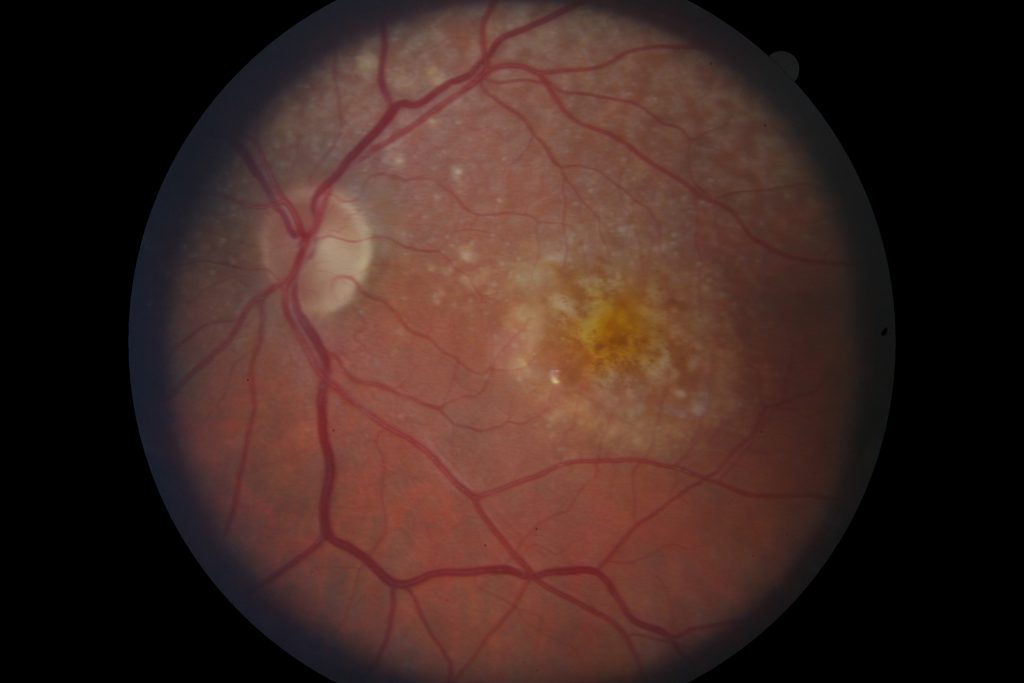
Retinal scan of dry macular degeneration
Lastly, macular degeneration is the primary culprit for blindness in adults over 50. While these patients never go completely blind from the condition alone, it certainly devastates their independence. There are two versions of macular degeneration: wet and dry. At Visionary Eye Care Center, we diagnose and manage both conditions with help from our local retinal specialists.
It turns out the advice of “don’t stare too long at the TV” is still true, thanks to our phones and other electronic devices. Recent studies show that we blink less than half as often when looking at a screen, which can lead to dryness and eye fatigue.
Our Reno family eye care experts suggest that everyone, at any age, should practice the 20-20-20 rule when using a screen. Just looking at something 20 feet away, for 20 seconds, every 20 minutes, will help reduce the dryness and eye strain of computer vision syndrome.
Using proper eye protection outdoors is also important. UV rays are harsh on your eyes in the long term. Sunglasses work wonders to protect your eyes from the elements and reduce your risks of cataracts, pterygia and macular degeneration.
Lastly, a balanced diet that is rich in Omega-3s, Vitamins C and E, and zinc, can help combat age-related eye disease. These supplements are often used to combat the effects of dry eye and slow the progression of dry macular degeneration.
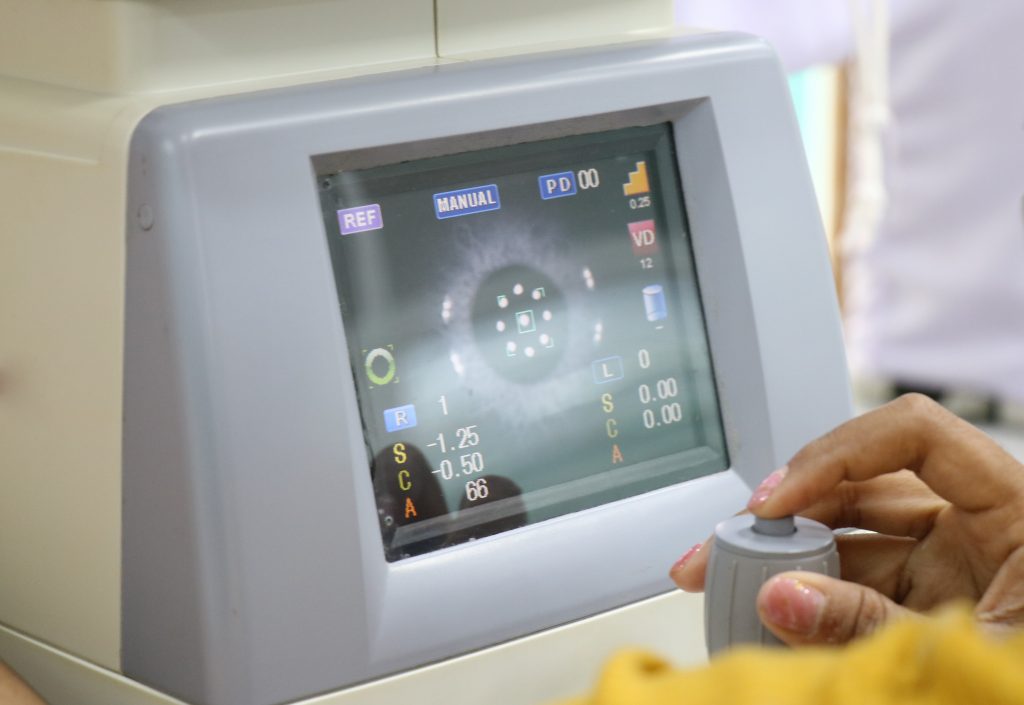
All in all, simple changes to your lifestyle and new habits will help prolong your eye health. If you’re experiencing changes in your vision or have questions about how to protect your eyes, make an appointment at our Reno optometrist office today.
Request an Appointment at Visionary Eye Center
It’s pretty painful to get a sunburn after missing a spot on your skin with sunscreen. Just imagine how a corneal sunburn would affect your quality of life during some of the best weather of the year. Also known as photokeratitis, this issue occurs during short-term exposure to high intensity UV-B rays. Photokeratitis is painful but temporary and is similar to a sunburn, but on your corneas (the clear portion of your eye in front of your pupil) instead of skin. It can look like a yellow, thickened area in the whites of your eyes. Too much exposure with ultraviolet rays can temporarily damage your conjunctiva, which is the clear layer of tissue covering the inside of your eyelid and whites of your eye.
Summertime activities that can put someone at increased risk for photokeratitis include mountain climbing, hiking, skiing, and swimming. It can also occur if you use sunlamps and tanning beds, or spend time in an environment with consistent UV light exposure.
There are two types of UV light proven to contribute to eye, skin, or health issues. UV-A rays can pass through your eye’s cornea to reach the lens and retina. UV-B rays can’t pass through glass but still can cause eye damage.

The symptoms of photokeratitis are pain and redness in the eyes, swelling, light sensitivity, headaches, temporary loss of vision, twitching eyelids, and seeing halos (like in the photo below). They can last from six to twenty-four hours but typically disappear after forty-eight hours.

Photokeratitis is most often formally diagnosed after an eye exam, and your doctor will place drops containing a special dye known as fluorescein in your eyes to reveal any superficial irregularities on the surface of your cornea. As for treatment, go indoors immediately after experiencing symptoms and avoid bright lights. Once in a darkened area, place a cold washcloth over your eyes and take ibuprofen. If you wear contact lenses, remove them and use artificial tears to reduce discomfort.
The longer you were exposed to UV lights, the more severe the symptoms. Long term exposure to even the tiniest amount of UV radiation can increase the risk of developing a cataract or macular degeneration (an eye disease that leads to vision loss in the center), or cause tissue elevations on the surface. These conditions are known as pinguecula and pterygium, but can be prevented by wearing sunglasses.
If you wear contacts, ask about ones that absorb UV rays when working or playing in a sunny environment. But even with these types of contacts it’s still important to wear protective sunglasses to shield your eyelids and conjunctiva from the suns’ rays.

The good news is that photokeratitis is preventable simply by wearing the proper eye protection when outside, like prescription sunglasses or snow goggles in the winter. Glare from snow, sand, or water can cause burns to your eyes even if it’s overcast. A wide brimmed hat can help filter out the sun’s rays as well.
When purchasing a pair of sunglasses, it’s worth noting that not all sunglasses are polarized. Polarized sunglasses are manufactured in a distinctive way that creates a different pattern in the lens to block out more light than a usual pair of sunglasses. When choosing a pair, look for one that provides one hundred percent UV protection or UV 400 protection. Prescription sunglasses help with overall light sensitivity, headaches caused by glare, and regular eye strain from squinting in bright sunlight.
For more information, check out our other blog post on prescription sunglasses here.
Be sure to visit your eye specialist once a year to stay up on your eye health and catch any issues early. It’s never been a better time to make an appointment with the team at Visionary Eye Center to get the perfect pair of prescription sunglasses for your summer adventures.
Our Reno eye care facility is one of the best in preventing photokeratitis in our patients.
Schedule an Exam with an Eye Doctor in Reno
March is National Save Your Vision Month, so what better time to schedule your annual eye exam. With Spring Break quickly approaching, it’s the perfect time for the whole family to see an optometrist in Reno. Dr. Bolenbaker and his team at the Visionary Eye Center look forward to meeting you and your family and taking care of your eye vision needs. As the best eye doctor in Reno, we offer pediatric eye care services to ensure that your child is developing proper depth perception, essential binocular skills and more.

Preventative eye care is important because eyesight is one of the most important senses. Eighty percent of what we perceive is because of our eyesight, so protecting your eyes will reduce the chance of blindness, vision loss, and long term eye diseases like cataracts and glaucoma. Vision disability is one of the top 10 disabilities among adults 18 years and older, and is one of the most prevalent disabling conditions among children. Because of our aging population, the CDC reports that the number of visually impaired individuals in the United States will double by 2030 and triple by 2050.
Other reasons to see an eye doctor in Reno include getting assistance with any decreased vision, eye pain, or double vision issues. We strongly encourage people to take care of their vision health, and the first step to it is making sure to schedule an annual eye exam. Visionary Eye Center can offer these important services in addition to exams:
Take care of your eyes and correct mild cases of farsightedness and presbyopia by beginning the safe processes of orthokeratology, myopia control, and more at our center today. The Lasik procedure is a great refractive practice to help with easily fixing any vision issues too.
Our Reno family eye care center is also one of the only low vision specialty clinics around, and there’s nothing more enriching than helping the partially sighted regain their independence.

We want the Reno community to be well informed on the best eye health decisions all year round. We offer several services for your eye health, whether it’s dry eye care, contact lenses, or myopia control. Don’t put off something as important as preventative eye care. The team at Visionary Eye Center are Reno optometrists with plenty of experience. Click here to schedule an appointment today. Please don’t hesitate to contact us with any general inquiries or concerns, and we look forward to meeting you!
Here at Visionary Eye Center, we treat plenty of patients with blepharitis, so you aren’t alone. An estimated 82 million Americans have been diagnosed with the eyelid disease. As eye doctors in Reno with decades of experience, we strive to make sure that our patients understand the cause of blepharitis: simply just an abundance of bacteria near the eyelids.
Because the disease contributes to dry eye syndrome, it leads to other symptoms like itching, a gritty feeling in the eyes, eyelid crusting that looks like dandruff, and red, swollen eyes. In addition to serious discomfort, blepharitis can negatively affect those scheduled or in the process for cataract or LASIK refractive surgeries. If left untreated, blepharitis can cause patients to experience chronic red-eyes, styes, or damage to their corneas.
There are two different types of blepharitis: posterior and anterior. Posterior blepharitis is usually caused by inflammatory conditions like rosacea. Anterior blepharitis is typically caused by microbes like Staphylococcus bacteria (which causes staph infections) and Demodex mites.
Demodex are mites that live on skin and thrive in hair and lash follicles. Younger children or the elderly are more likely to have an abundance of mites. Demodex mites’ average lifespan is estimated to be several weeks, but that is enough time to cause serious cases of blepharitis. They cause irritation with burrowing and laying eggs, and producing small amounts of waste products which feeds further bacterial growth.

Treatment for blepharitis is possible. One common option for Reno optometrists to utilize is ZEST, or Zocular Eyelid System Treatments. It works by gently exfoliating the eyelids to restore the natural state and cleans the eyelid margins to open up the meibomian gland. ZEST ensures the glands can release oils into the eye to create a healthy tear film and reduce symptoms of dry eye, all while providing thorough treatment for blepharitis and other potential diseases. This natural procedure is completed in about ten minutes and helps solve crusting around the eye.
Blepharitis can damage the meibomian glands along the edge of the eyelid where the eyelashes are. These glands create oil needed for tears. The oily layer is the outside of the tear that prevents them from drying too quickly. A number of eye issues can involve these glands, and for more information on additional treatments and procedures, head to our informational page on dry eye syndrome.
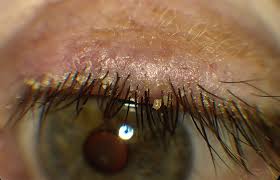
It is not too late to seek out treatment for Demodex mites on your lids or blepharitis. With a variety of eye care methods, including the use of ZEST, the team here at Visionary Eye Center can relieve your eye concerns. Book an appointment today with the best Reno optometrists in the city.
Keratoconus may not be a familiar word for many people, but the disease affects a large number of eye care patients. Keratoconus (KCN) is a progressive eye disease that causes complications with the cornea. It results in vision problems that range from mild to severe and will likely require some form of corrective methods to improve the person’s ability to see.
Through years of research, professionals have been able to determine generally how many people have keratoconus, and the results are surprising. Since a 2017 study performed by Dr. Daniel Godefrooij, it was found that KCN affects roughly 5-10 times more patients than the original findings suggested. Let’s take a deeper dive into what keratoconus is below.

As stated above, keratoconus is a progressive eye disease that can impair a person’s vision and significantly affect the cornea. For patients with keratoconus, the cornea in one or both eyes becomes thin and scars in the center. Specifically, keratoconus involves the central portion of the cornea, which affects a large portion of the eye. The result is a noticeably protruding cornea that has an irregular conical shape followed by poor eyesight.
It’s typical for keratoconus to become present during puberty, or a person’s teen years, and worsens or progresses over time. By the 5th or 6th decade of life the disease will stabilize, but typically a patient with keratoconus will experience irregular astigmatism or scarring that might not be treatable by corrective lenses alone. In the worst cases, a patient may require a corrective procedure known as a corneal transplant.
Originally, research done in part by NKCF (National Keratoconus Foundation) suggested that 1 in 2,000 people were diagnosed with KCN. Years later in 2017, these numbers were questioned by Dr. Daniel Godefrooij who determined that these rates are significantly higher than what was traditionally found. When determining how many people have keratoconus, LASIK (laser in situ keratomileuses) eye surgery played a critical role.
LASIK is a popular method of vision correction that uses lasers to correct the refraction of eye lenses for patients suffering from myopia, hyperopia, and astigmatism. With the increased popularity of LASIK therapy came the realization that keratoconus affects more people than had been previously reported.
Today, Dr. Daniel Godefrooij reports the ratio of people suffering from KCN being 1 in 375. That’s more than 5 times as many people as researchers had originally found.
The cause of KCN is still mostly undetermined, but the development and progression of the disease have been heavily studied over time. Some research has suggested that chronic rubbing of the eyes may contribute to and possibly expedite the overall progression of the eye disease. The most common symptoms of keratoconus to be aware of include:
The plan of treatment for keratoconus will depend on the severity of the patient’s condition. Of utmost importance is early detection, as a recently FDA approved treatment called corneal cross-linking is now available to stabilize the condition. Mild KCN may be treated with the use of corrective lenses, such as eyeglasses or contact lenses. Moderate cases will likely require specialty contact lenses like gas permeable (GP), hybrids or scleral lenses to provide acceptable vision. However, severe forms of KCN may require more aggressive treatment methods such as a corneal transplant or Intacs Corneal Implants.
Keratoconus treatment focuses primarily on slowing the progression of the disease and improving vision. Essentially, there are three types of treatment to help with KCN symptoms which consist of corrective lenses, therapy, or surgery.
If you’ve been experiencing vision problems, it’s important to meet with your Reno optometrist to properly diagnose the issue at hand. You may be suffering from keratoconus and not even realize it. A licensed, trained optometrist can evaluate your vision problems, assess your eye health, and provide an effective method of treatment.
It may be necessary to consider eye surgery and specialty contact lenses to correct your vision problems caused by keratoconus. Dr. Bolenbaker at the Visionary Eye Center can help to develop a unique treatment plan that’s designed to suit your eye care needs.
If you are a driver who also wears glasses, you’ve probably struggled to decide between which pair of glasses to put on in the car. Either way, you’re hindering your vision one way or the other. By not wearing your eyeglasses, you likely won’t be able to see near or far away depending on your eye condition. But not wearing sunglasses could mean being blinded by the harsh UV rays of the sun. The best option is to get yourself a pair of prescription sunglasses, that way you can achieve optimal vision.
When it comes to prescription sunglasses, there are many varying types to choose from. One of our favorites is the polarized sunglass lens that provides added protection to your eyes in harsh sunlight. Learn more about prescription sunglasses and polarized lenses below.
 The Importance of Protecting Your Eyes with Prescription Sunglasses
The Importance of Protecting Your Eyes with Prescription SunglassesMany patients are unaware of just how damaging UV rays can be on their eyes and do very little to protect them from mild or harsh sunlight. Even if there is cloud coverage in the sky, UV rays can still negatively affect your eyes. UV-A rays typically lead to problems with central vision and the macula which is part of the retina. UV-B rays are also damaging, mostly affecting the cornea and lens. Extended exposure to these harmful rays can lead to more serious eye conditions including:
Though many people are hesitant to spend the money on purchasing a second pair of glasses by buying prescription sunglasses, those who have are sure glad they did. Prescription sunglasses provide much-needed sight assistance even in high-light situations. When you’re driving down the street or taking your dog for a walk and the sun is glaring in your eyes, your regular prescription glasses will do very little to help you see. Likewise, wearing sunglasses with no prescription leaves you with very little vision. Prescription sunglasses, however, block out the sun while providing the same sight assistance as your glasses.
Prescription sunglasses can also help with light sensitivity, glare-related headaches, and regular eye strain from squinting in the sun. And if you’re worried about crow's feet, not squinting all the time from either harsh sunlight or blurry vision can help reduce those lines around your eyes.
First, it is important to note that not all sunglasses are polarized. While all sunglasses are designed to limit UV rays from penetrating through the lenses and limit glare, some are much more effective than others.
To understand how polarized sunglasses work, you need to know how light is reflected. Most sunlight that reaches our eyes is dispersed and scattered due to the fact that it often reflects off of uneven surfaces such as trees and roads. However, when sunlight is reflected from a smooth, shiny surface like the hood of a car, Lake Tahoe or a phone screen, the light is reflected in just one direction. The dispersed light is much less bothersome and damaging, while light that is directly reflecting into your eyes is more troublesome.
Polarized sunglasses are manufactured in a unique way that creates a different pattern within the lens that is able to block out more light than typical prescription sunglasses. A special film is laminated in between the lens surfaces in a vertical pattern. This helps block light and eliminate polarized glare entirely.

There are many advantages to wearing prescription sunglasses, especially with polarized lenses. Polarized lenses provide clearer vision in bright light, increases contrast, offer minimal color distortion, and reduces glare, reflection, and eye strain. And, the polarization is built directly into the lens, leaving a seamless finish for flawless vision. For anyone who spends time outdoors, polarized lenses will provide the best UV protection for your eyes.
When it comes to eye protection, eyeglasses and sunglasses are essential. With prescription sunglasses, you never have to worry about choosing which pair of glasses to put on again.
Visionary Eye Center is your home for custom vision solutions, and we take pride in offering top-tier care for each patient. We want our patients and community to be well informed to make the best health decisions for you and your family. Please don’t hesitate to contact us with any general inquiries or concerns, or schedule an appointment for an eye exam!
Just like with the rest of your body, age can have drastic effects on your eyesight. One of the most common age-related eye conditions out there is cataracts. You may be asking yourself, “what are cataracts?” and you’re not alone. Though many people have heard of cataracts, they’re less informed about the types, symptoms, and treatment of them. Considering how common cataracts are, it’s likely that you or a loved one may be affected by the eye condition if you don’t take the proper precautions. Take a look below to learn all you need to know about cataracts and see what you can do to protect yourself from developing this condition.
 What Are Cataracts?
What Are Cataracts?Cataracts are described as clouding of a normally clear eye lens. They affect the natural lens of your eye which leads to impaired vision and other sight complications. Typically, cataracts affect older patients over the age of 60 and are most noticeable in dim lighting. Fortunately, cataracts do form slowly and can be treated.
Though the cause of cataracts has not yet been fully determined, it’s understood that they form when proteins build up in the lens, making it appear cloudy. The cloudiness prevents light from passing through the lens clearly resulting in vision impairment. There may be several causes of cataracts, but generally, age, exposure to sunlight, and eye trauma are the biggest contributors.
The main symptom of cataracts is the inability to see clearly. Cataracts cause light to be blocked by the natural lens impairing your vision. Other signs and symptoms of cataracts include:
There are several types of cataracts including cortical, posterior subcapsular, and nuclear sclerotic cataracts.
Nuclear sclerotic cataracts are the most common and it’s very typical for people to develop them in their late age. This type of cataract forms in the center of the lens also called the nucleus. You may notice your vision improve for a brief amount of time when developing nuclear sclerotic cataracts but these effects do not last. Over time, your lens will begin to harden and become yellow or brown in color. It makes seeing small details almost impossible, dulls colors, and may result in seeing halos forming around objects.
Cortical cataracts are common in diabetes patients. These cataracts develop opposite from the nucleus, starting at the outer layer of the eye rather than the center. As it progresses, it creates noticeable spokes that lead from the outside in. A unique symptom of this type of cataract is experiencing changes in both contrast and depth perception.
Posterior Subcapsular cataracts develop much quicker than other types of cataracts, typically over months rather than years. Posterior cataracts start at the back of the lens and are most common in diabetes patients or those with extreme nearsightedness. Steroid use can also increase the risk of developing posterior subcapsular cataracts. With posterior subcapsular cataracts, you will first notice changes in your night vision and may also notice more difficulty reading.
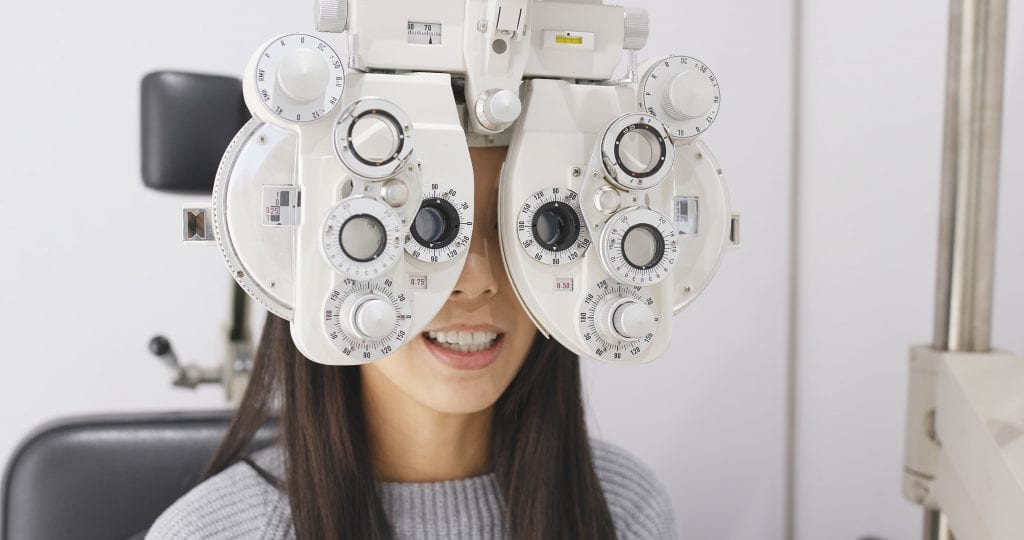
The good news is that cataracts are easily treatable by medical and eye professionals. If you catch the condition early enough, a stronger prescription lens can improve your vision for some time. Typically, increasing your light source will also help vision in patients with cataracts, so be sure to add light to your home and use your new prescription glasses or contact lenses.
If these no longer work for you, then cataract surgery is going to be necessary. Cataract surgery is the only way to remove the cataract and fully treat it. There are several kinds of operations for cataracts, but they all require your surgeon to take out the cloudy lens and replace it with an artificial one. The surgery usually takes about 15 to 20 minutes, and you don't need to stay overnight in a hospital. If you have cataracts in both eyes, your doctor will wait until your first eye heals before they perform surgery on the second. More than 95% of people who have this done say they can see better afterward.
While there is no surefire way to prevent the onset of cataracts, there are some precautions you can take to limit your risk of developing cataracts. With risk factors such as increasing age and previous trauma or injury, there’s little you can do to keep eye problems from worsening. However, other risk factors can affect this as well. Some of them include:
In order to prevent cataracts from forming, try making some life changes such as:
Cataracts are the leading cause of blindness worldwide, though in the United States access to cataract surgery is readily available, so most Americans, fortunately, do not need to live with vision impairment from cataracts for very long. Should your condition require more advanced medical care, we work with many of the area's best specialty surgeons to co-manage any problems you may develop.
If you’re struggling with complications caused by cataracts or are just starting to develop cataracts, contact the Visionary Eye Center today! Here, we strive for customized eye care solutions for our Reno-Sparks patients and are eager to help you gain back control of your vision.
Vision problems can be a huge distraction in your daily life, making even casual tasks such as driving extremely difficult. One common vision problem that patients may experience is night blindness. You may be asking yourself, "what is night blindness?" and you're not alone. Someone with night blindness will have difficulty seeing in dark environments, which is especially noticeable when driving at night. Night blindness can be dangerous in some situations, so it’s critical that you get the help you need to alleviate your symptoms and get your eye health back on track.
For more information about night blindness, read the article below or contact our Reno optometrists today.
 What is night blindness?
What is night blindness?Night blindness, professionally known as nyctalopia, affects your ability to see at night or in poor lighting conditions. Although many people believe night blindness is an eye condition/disease all of its own, this actually isn’t true. Night blindness is the result of an underlying health issue such as cataracts, diabetes, or myopia. It’s also important to note that night blindness does not result in actual blindness but does lead to impaired vision in dark environments.
Night blindness often presents itself when transitioning from a well-lit area to a dark, poorly-lit environment. Our eyes naturally adjust and adapt to changes in light, but those with nyctalopia are typically unable to do this, resulting in poor visibility. If you have difficulty driving at night due to lousy vision or struggle to see in dark restaurants, movie theaters, etc., then you likely suffer from night blindness. However, many types of night blindness are treatable and symptoms often subside once the underlying issue has been resolved.
There are several possible causes of night blindness including:
 Symptoms:
Symptoms:The most common symptom of night blindness is experiencing poor vision in dimly lit or dark environments. However, this isn’t the only symptom that may present itself in those with nyctalopia. Other symptoms include:
Not all forms of night blindness can be treated, but a majority of them can be managed or remedied in some way. The treatment for your night blindness will vary depending on the cause of your condition. For example, if your night blindness is caused by myopia or nearsightedness, then new glasses or contact lens prescription may be recommended to alleviate your symptoms. And if your night blindness is caused by cataracts, surgery may be the only option for relief.
Other night blindness treatments may include a change in glaucoma medication or a visit with a retinal specialist. To determine your best course of action, it’s essential to visit your Reno eye doctor. They’ll be able to diagnose the cause of your night blindness and will provide the best treatment plan based specifically on your needs.
 See how you can prevent night blindness
See how you can prevent night blindnessAlthough some night blindness may be the result of a genetic disposition, other forms of nyctalopia may be prevented with some simple lifestyle changes. Try making these easy changes in your everyday life to help prevent the onset of night blindness:
Here, at the Visionary Eye Center, we strive for customized eye care solutions for all of our patients in the Reno-Sparks area. As each patients’ needs are unique, your treatment plan should be unique to you as well. We’ll work with you to determine the underlying cause of your night blindness to develop a solution that addresses your symptoms and treats your vision problems.
Our office uses the latest diagnostic technology and treatment solutions so you can receive cutting-edge options and not the bulk products that are found in other optometrists’ offices. Contact us today to get started with your personalized eye treatment. We look forward to meeting you!
Children and infants aren’t exempt from experiencing vision problems. Like adults, children can suffer from a variety of eye conditions including amblyopia, strabismus, and refractive errors such as nearsightedness and farsightedness. Genetic diseases such as glaucoma and cataracts may also affect children at a very young age. Thankfully, with regular vision checks, your child’s eyesight difficulties can be detected and treated early on. Start by learning the signs of vision problems in babies and children so you and your pediatrician can refer to an optometrist and rectify the situation before it gets out of control.

Eye exams should be done by your optometrist regularly. Unfortunately, pediatrician screenings aren’t designed to detect the subtle signs of early disease or vision problems. So, just like it is important to have your child see the dentist early, so too is it important to bring your child to an eye care professional at the following ages even if nothing seems wrong:
All children who wear glasses should have their vision checked yearly at their annual checkups. At these appointments, it will be determined how the vision problems are progressing and new glasses or contact lenses will be prescribed if necessary.

Vision problems may appear at any point in a child’s life. Many of the signs of vision problems in babies and children will be easy to spot, but some may go unnoticed if not closely monitored. If you notice any of the following signs or symptoms in your child, be sure to connect with your optometrist to see if further action should be taken:
Some vision problems may have no symptoms at all. Commonly, amblyopia (lazy eye) provides no obvious warning signs, which is why it’s so important to have your child’s eyes checked regularly. Tests can be done to determine if an eye condition is present or developing. Catching these signs early on is critical as it can help prevent your child from suffering chronic vision problems.
If you are concerned about your child’s eye health, or if you’re still wondering what are the warning signs of vision problems in babies and children, don’t hesitate to schedule them an appointment with an optometrist. Here at the Visionary Eye Center, we are equipped to offer pediatric eye care with the best options, treatment, and technology available.
We have developed techniques and technology specifically for children of all ages. When it comes to your child’s eye health, being proactive is essential. Feel free to contact us with any questions or concerns about your child’s vision, and don’t hesitate to schedule an appointment with us today! Visionary Eye Center is your home for custom vision solutions, and we take pride in offering top-tier care for each patient.
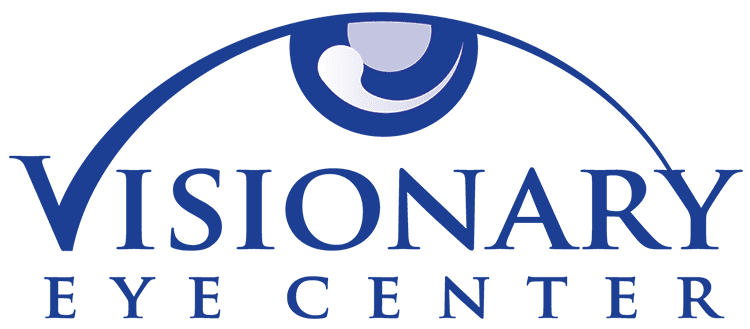 775.827.1100info@visionaryeyecenter.com8175 South Virginia Street Suite B-900
775.827.1100info@visionaryeyecenter.com8175 South Virginia Street Suite B-900